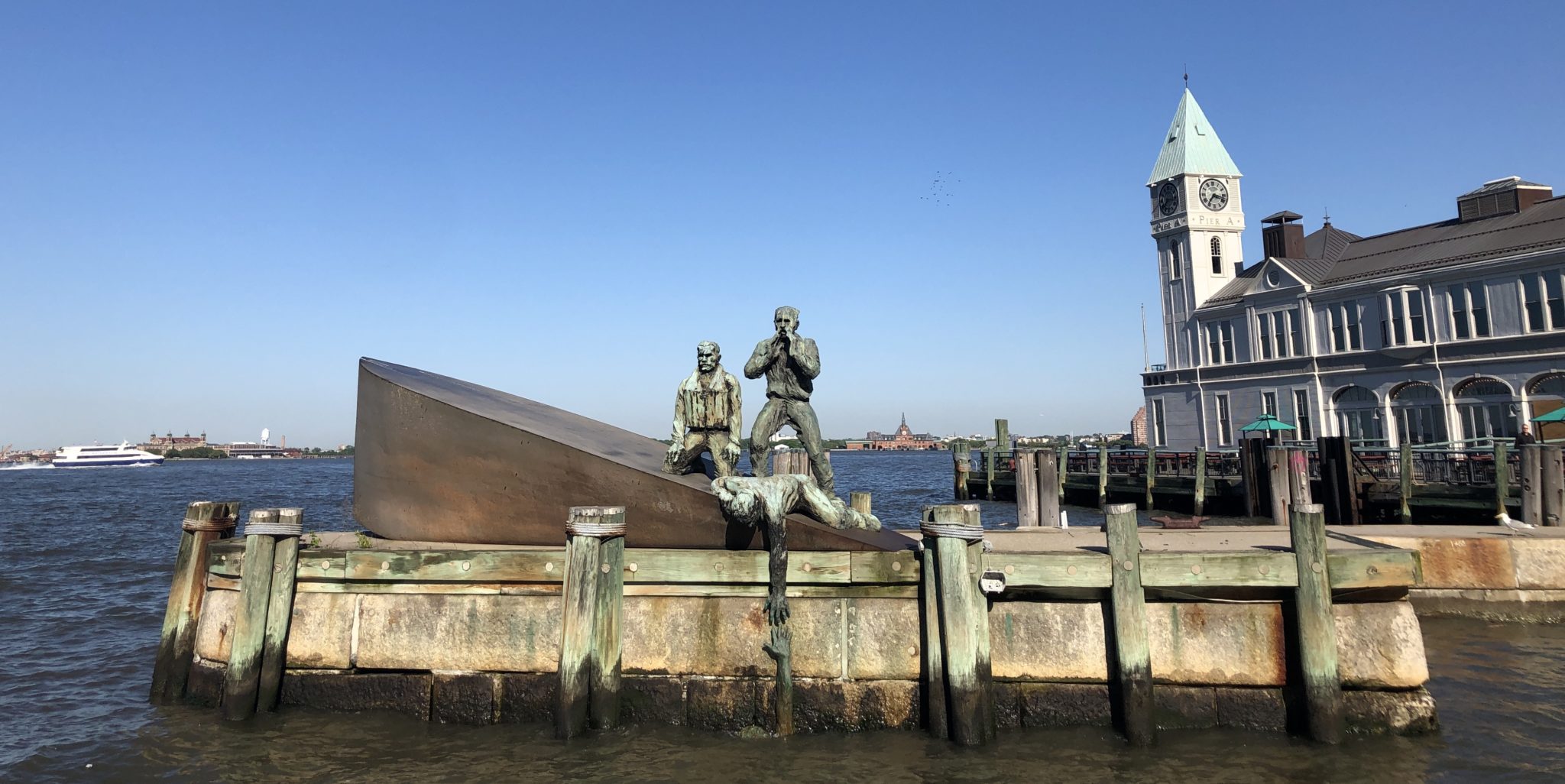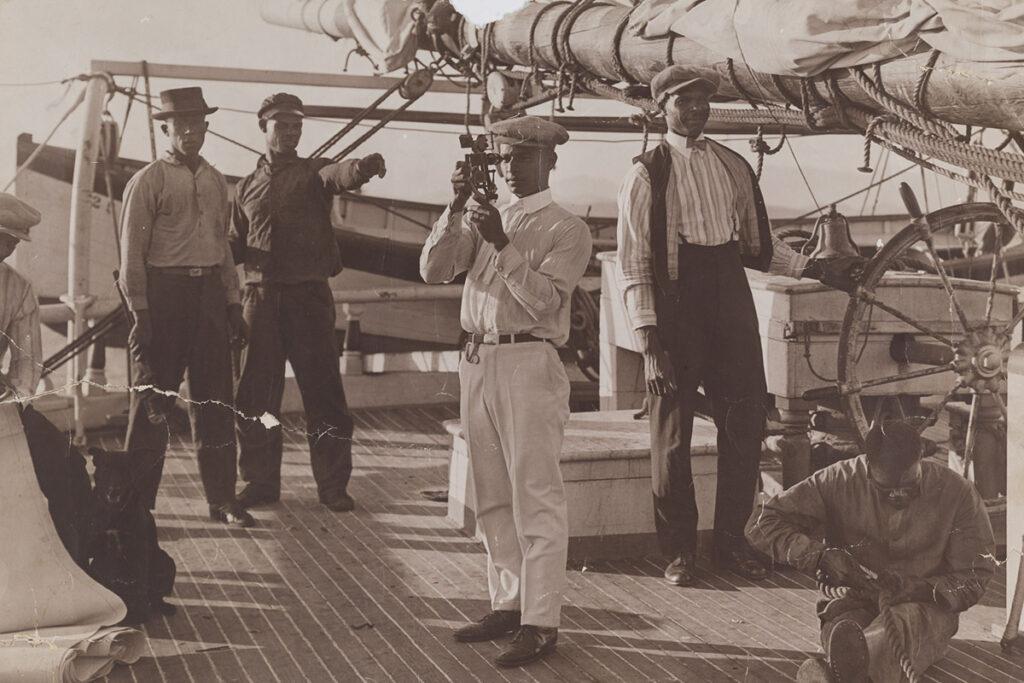Celebrating America’s Maritime Innovations and the Merchant Marines
A Collections Chronicles Blog
by Carley Roche, Collections Preservation Specialist
May 22, 2022
Today is a day of celebration. A day of recognizing American innovation at sea and a day of honoring the men and women who have risked their lives and private ships to ensure supplies safely reach their destinations in times of both peace and war. Once a year we recognize the actions and sacrifices of the U.S. Merchant Marines, we celebrate America’s historic role as a leader in shipping and commerce, and we remember the first successful steam-powered trans-oceanic crossing. Today is National Maritime Day– observed annually on May 22nd.
Revolutionary Beginnings
During the eighteenth century, trade routes across the Atlantic Ocean connected the Thirteen Colonies, Europe, and Africa. This was the height of the Age of Sail in which trade and commerce was dominated by ships and sea. Due to high rates of piracy at the time, civilian merchants, or privateers, heavily armed their ships to ensure their goods safely crossed the ocean.
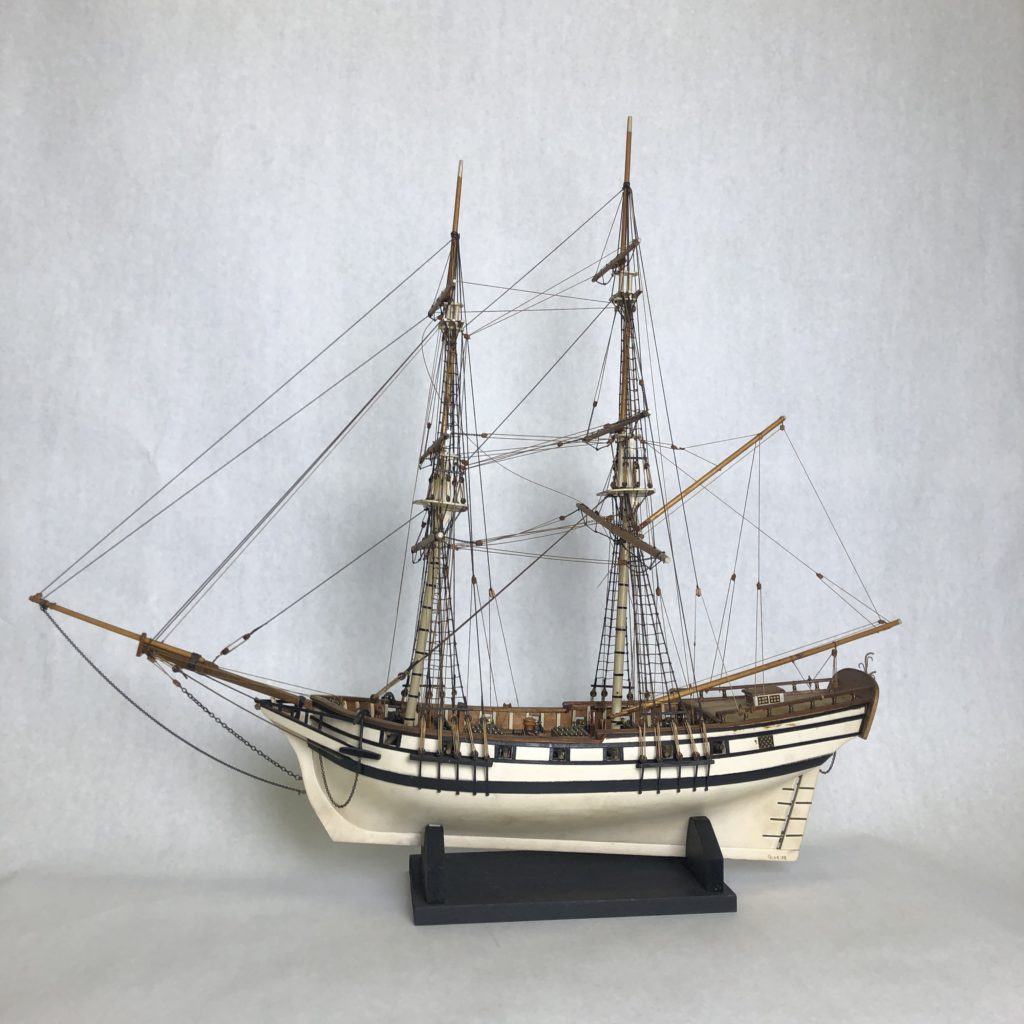
When the Colonies declared independence from Britain they quickly found themselves at a naval disadvantage: America had a fleet of 31 ships compared to Great Britain’s 270. The Continental Congress called out to privateers to defend their new nation with their armed private ships.
An estimated 55,000 merchants answered the call to defend their new nation. Once fighting began, captured Patriots were offered a choice: remain prisoners or join the British Navy. The majority of privateers refused to turn their backs on their fellow countrymen and chose captivity. The British left these men behind on abandoned ships leading to the deaths of approximately 11,000 civilian merchants from malnourishment and disease.
“Scale ship model of Fair American, a privateer ship during the American Revolutionary War” n.d. Seamen’s Bank for Savings Collection. 1991.069.0138
Early in the Revolution, privateers succeeded in a striking victory against the British. On June 12, 1775, after news of Lexington and Concord had reached Machias, Maine (then part of Massachusetts), local merchants attacked and captured British schooner HMS Margaretta. When news of this successful naval engagement reached the Continental Congress, the privateers were issued Letters of Marque. This gave legal rights to the merchants to attack and capture any British ship. With these Letters, Patriot privateers sailed up and down the coast during the Revolution disrupting the British supply chain. Thus the start of the Merchant Marines– predating both the Coast Guard and the United States Navy, which were founded in 1790 and 1797, respectively.
SS Savannah: Pioneer of Modern Steam Propulsion
In 1933, Congress declared May 22nd to be known as National Maritime Day. This date was specifically chosen in honor of SS Savannah departing from its namesake in Georgia on this day in 1819 to become the first successful steam-powered ship to successfully cross any ocean. Although Savannah had a troubled voyage her achievement cemented America’s role as an innovative nation on a global scale.
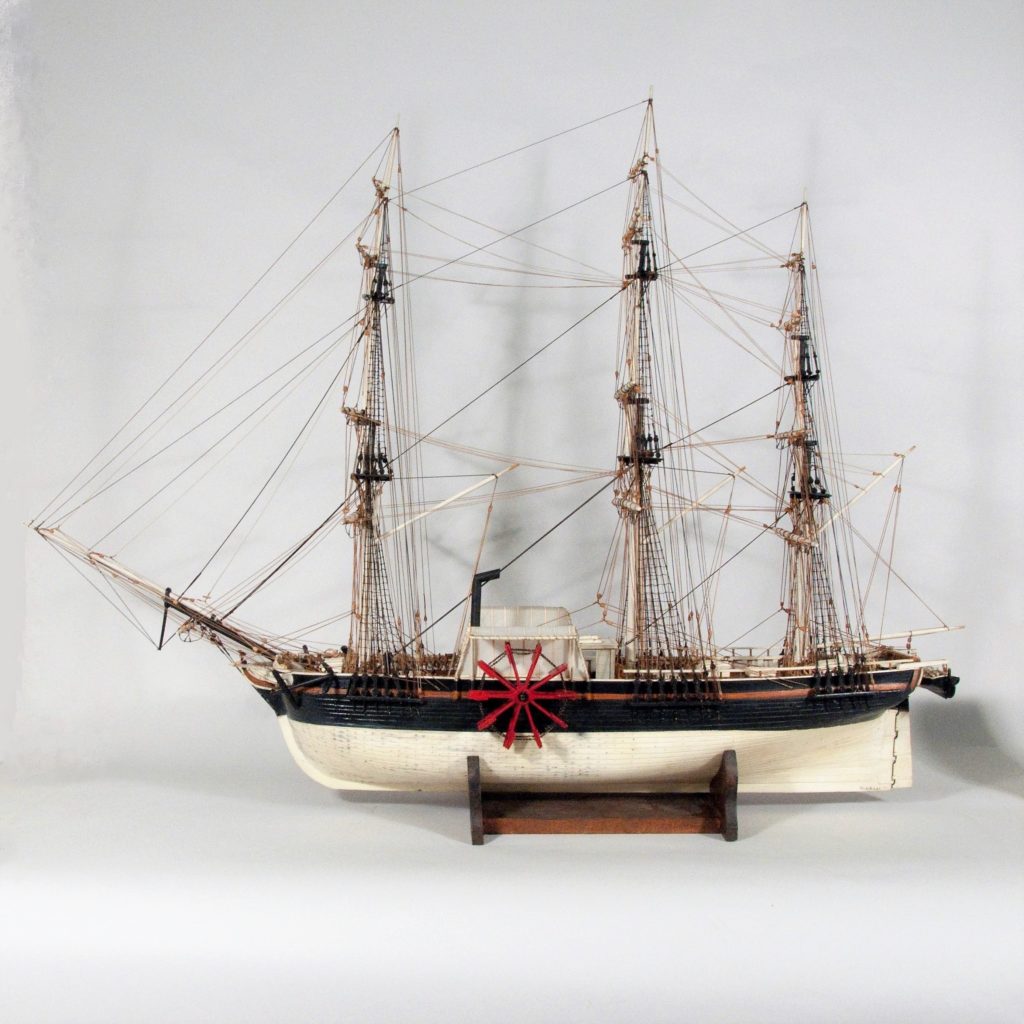
The history of Savannah begins right here in New York City where she was built in 1818 by Fickett & Crockett. Originally intended to be a sailing packet, Captain Moses Rogers convinced wealthy shipowners Scarbrough & Isaacs in Savannah, Georgia to add a boiler and steam propulsion system to the ship. Captain Rogers personally oversaw the addition of the sidewheel steam propeller to the 98 foot long and 320 ton vessel, which transformed her into a modern marvel.
Soon after the ship’s construction finished, Savannah made her way down to Georgia where she would depart for her maiden voyage. She took on no passengers and no cargo during this historic excursion because few had faith in the new steam technology’s ability to cross the Atlantic.
“Scale ship model of SS Savannah” ca. 1945-1975. Peter A. and Jack R. Aron Collection, South Street Seaport Museum Foundation 1991.069.0133
Savannah proved doubters wrong when she pulled into Liverpool Harbor on June 21, 1819. Residents believed the ship to be on fire and the crew to be in danger, when in fact it was thick smoke emerging from the steam-engine.
Despite successfully making the crossing, only about 80 hours of the 29 days and 11 hour trip actually used steam power. Savannah’s transatlantic crossing is considered a groundbreaking innovation in maritime history, but the ship herself became a financial failure. In 1820, her engine was removed and she served as a packet ship until 1821 when she ran aground off the coast of Long Island.
Recognizing the Z-Men
Now that we understand why National Maritime Day is celebrated on May 22nd I think it is important we turn our attention back to who we are honoring: the Merchant Marines. As stated above, their history begins with the Thirteen Colonies and the American Revolution. Merchant Mariners have actively participated in every conflict since then to deliver supplies, ammunition, and fuel to American troops and their allies on foreign soil.
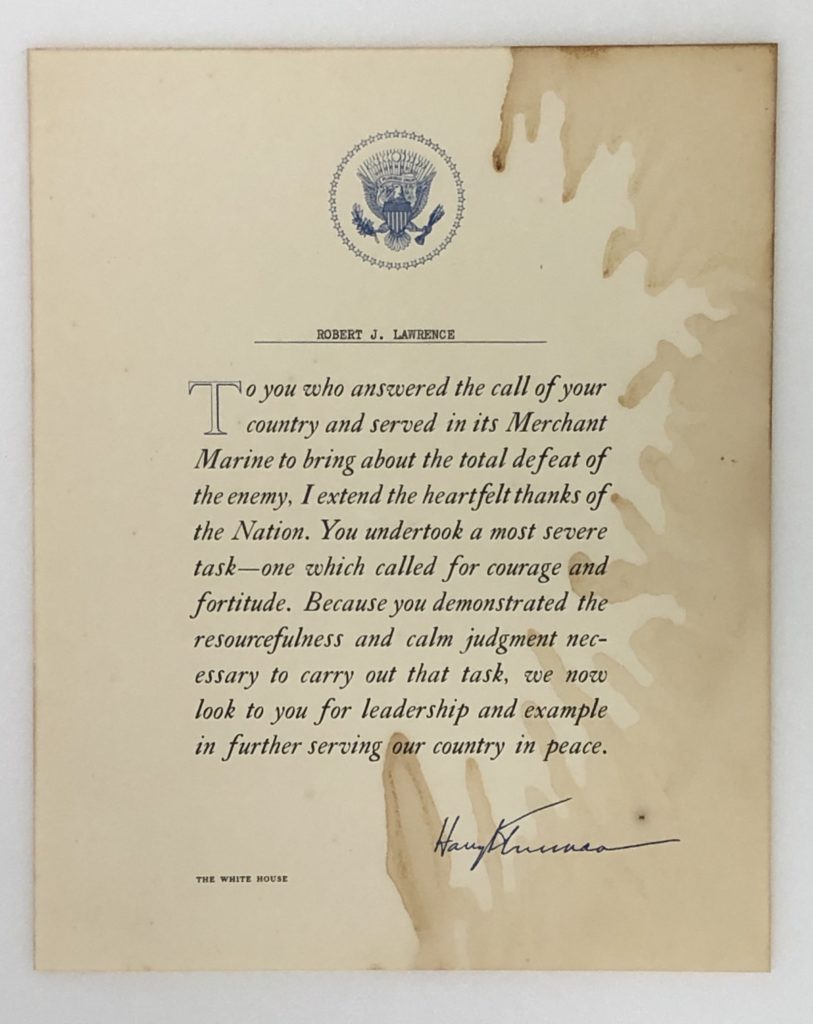
While Merchant Mariners have played a role in America’s war efforts for centuries their actions during WWII cemented them as the country’s “Fourth Arm of Defense.”
Nicknamed Z-Men, due to their identification cards known as z-cards, Merchant Mariners began aiding the war effort two years before America joined the Allied forces. These civilian sailors risked their lives by carrying cargo past German submarines and dive-bombers.
Of the 243,000 Merchant Marines who served in the War approximately 9,500 died– the highest casualty rate proportionally for all American military branches during World War II.
“Letter from the White House to Robert J. Lawrence thanking him for his service during World War II” ca. 1947. South Street Seaport Museum 1983.037.0001
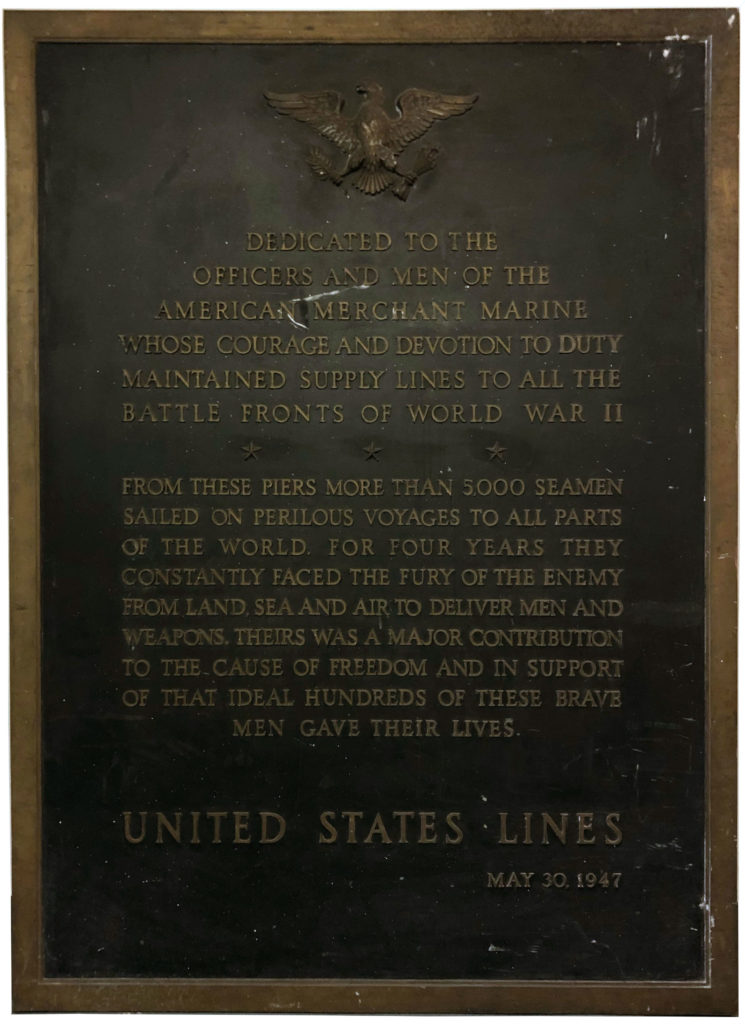
General Douglas MacArthur stated, “I hold no branch in higher esteem than the Merchant Marine…”[1] Professional Mariner: Journal of the Maritime Industry. June 5, 2017. The sacrifices and tactical maneuvering made by civilian sailors helped to ensure Allied victory. Despite General MacArthur’s recognition of the Merchant Marine’s role in the war effort these men received very little from the public and the government when they returned home.
The plaque here, commemorating New York Mariners who served in World War II, is more than most received to honor their sacrifices and tactical maneuvering throughout the war. The public did not fully understand the Mariners’ role supplying essential supplies and the Government did not grant them Veterans status until 1988. And even this has strict stipulations for full benefits– including use of the GI Bill– and burial rights.
“Memorial Plaque from the United States Lines dedicated to the New York Merchant Mariners who served in World War II” ca. 1947. Gift of the United States Lines, 1969. South Street Seaport Museum 1973.045
Culture, Climate, and Commitment: The Future of the Merchant Marine
Each year, the United States Maritime Administration (MARAD) chooses a theme for National Maritime Day. This year it is Culture, Climate, and Commitment: The Future of the Merchant Marine. Centered around three virtual panel discussions, this year MARAD is dedicated to recognizing what can and should be done to create a welcoming and healthy environment for current and future members of the Merchant Marines.
The first panel already occured on April 26, 2022 discussing dignified shipboard treatment. A readout is available on MARAD’s website here. The second and third panels will both take place tomorrow, Monday, May 23, 2022. The topics discussed include maritime innovations and decarbonization, which you can register for here, and MARAD’s commitment to mariner mental health, which you can register for here.
Don’t forget to watch the live stream celebration of National Maritime Day on Tuesday, May 24, 2022. The event honors current and past Merchant Mariners as well as America’s maritime industry as a whole. The ceremony begins at 10am EST and can be viewed here.
One Last Look

“Silhouette portrait of Robert C. Reed” April 27, 1945. Gift of Elsie Howell, South Street Seaport Museum 1989.059.0121
Today as we celebrate the successes and sacrifices of the Merchant Marines since their first actions taken during the American Revolution it is important to remember these civilians who have sacrificed their lives and vessels for over two centuries. If you would like to see a more personal connection between the museum’s collection and the Merchant Marines I recommend you check out our collection of mariners’ silhouettes. You can read about them on our blog post Conza Howell’s Silhouettes or look at these items on our Collections Online Portal.
Additional readings and resources
“Supplying Victory: The History of Merchant Marine in World War II.” The National World War II Museum. February 7, 2022.
Brennan, John. “Forgotten Heroes of the Revolutionary War.” The Maritime Executive. July 3, 2018.
“Damn the submarine! We’re the men of the Merchant Marine!” Professional Mariner: Journal of the Maritime Industry. June 5, 2017.
“Foreign News.” Savannah Daily Republican. August 28, 1819.
“The Steam Ship Savannah: Marvel or Monster?” Georgia Historical Society.
“Logbook for First Transatlantic Steamship Savannah, 1819.” National Museum of American History.
Explore the Collections
Through the new and improved Collections Online Portal, you can explore highlights from the various collections within the Museum. Whether items are preserved in storage, displayed in Museum galleries, or on loan to fellow institutions, you can digitally discover some of these special objects in digital format.
References
| ↑1 | Professional Mariner: Journal of the Maritime Industry. June 5, 2017. |
|---|

